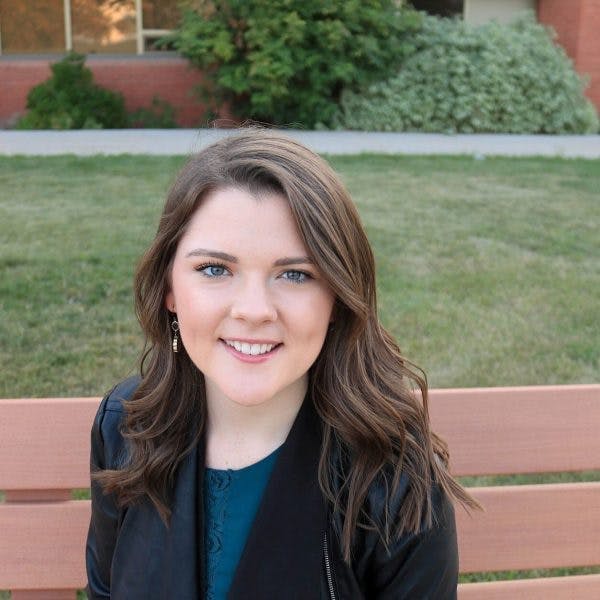How We Can Nudge Ourselves To Save More
Lately, I’ve been reading more about the psychology of poker, and how it can help with navigating uncertainty and making good choices under pressure. The game is an excellent metaphor for several facets of life in which we handle the unanticipated. One that comes to mind is our financial savings. In a time where the uncertainty of simply existing is more apparent than ever before, it frightens me to know that the majority of North Americans are not financially prepared for the unexpected.
Nearly half of all Canadians between ages 18 to 44 don’t have money set aside to cover emergencies.1 Many are living paycheque to paycheque, as 39% of Americans would be unable to pay an emergency expense more $400, and would be forced to use withdraw their retirement savings, incurring a financial penalty.2 While behavioral science has focused a great deal on encouraging long-term saving habits, I wonder to what extent we can encourage saving behaviors in the short term.
The benefit of short term savings
Short term savings are increasingly recommended by financial advisers and policymakers.3 An emergency fund is a savings account dedicated to unexpected expenses—ideally 3 to 6 months (sometimes up to 1 year) of living expenses.4 Emergency funds boost our feeling of financial safety which helps us make better financial decisions. Specifically, experts from Harvard, Yale, and Brigham Young University say this type of savings helps us overcome mental accounting — which is when we value economic outcomes in a way that makes us susceptible to irrational decision making.2
Behavioral Science, Democratized
We make 35,000 decisions each day, often in environments that aren’t conducive to making sound choices.
At TDL, we work with organizations in the public and private sectors—from new startups, to governments, to established players like the Gates Foundation—to debias decision-making and create better outcomes for everyone.
Present bias – Why we value immediate returns
But, it isn’t entirely surprising that the majority of us don’t have emergency savings. Saving money is “at the nexus of just about every behavioral bias we have”, according to Kate Glazebrook of the Behavioural Insights Team. Present bias and loss aversion are two predominant biases that distort our view of our finances and get in the way of optimal decisions. Yet, there are strategies we can implement to help us overcome these biases.8
Present bias describes our tendency to value things that are near in the future. Examples include work, people, and our perception of the value of money over time,9 even if this time frame is only 15 minutes. The famous Stanford marshmallow experiment reminds us that when given the option of one marshmallow now, or two upon waiting 15 minutes, most children won’t wait.10
Closely related is the concept of hyperbolic discounting, which explains why we prioritize immediate rewards instead of later rewards, even if the later rewards are greater. It’s a wide-ranging problem, as the majority of us have these biases, with studies finding that 74% of people will choose short-term gains over the long-term.11 The bias has a direct effect on our financial decisions, as those with present bias were found to choose a lower savings rate.12 This bias can have a detrimental impact on our future financial success, as it gets in the way of the benefits of compound interest in our savings.
The AI Governance Challenge
When making financial decisions, it is possible to overcome present bias. One useful tool is the act of imagining your future self. In several different studies, participants who were asked to consider their future selves engaged in improved behaviors such as enrolling in an automatic savings account, choosing long term rewards over the short term, and scoring better on a financial literacy exam.13 Using these tactics to overcome present bias is very beneficial — a study found that those with less present bias picked savings accounts with higher returns in the long term.14
Make a promise to yourself. It will boost savings
Actively committing to savings also helps combat present bias. A study found that participants who reflected on their saving goals gave a higher initial contribution and saved more throughout the experiment. The explanation for this result is that people want to be consistent with their words, intentions, and actions — this effect is stronger when we make these promises explicit by writing them down or declaring them publicly.11
In contrast, we prefer to avoid situations in which we have to lie. A different experiment found that individuals were less likely to commit to a savings account that allowed early withdrawals without a penalty as long as they declared a “real financial emergency”. Participants feared they may have to lie to make a withdrawal, so opted out of contributing in the first place.14 By considering our future and making an active, realistic commitment to our goals we can overcome our tendency to save less.
These small behavioral tactics have created great results. The “Save More Tomorrow” plan in the US developed by Richard Thaler and Shlomo Benzarti directly targets present bias by having people commit to saving in the future.15,16 In just over 3 years, participants in the program have increased savings from 3.5 percent to 13.6 percent.15 Although present bias is a problem for most of us, simple tactics like considering our future selves and actively committing to our savings can have a tremendous impact on our financial behavior
Loss aversion – How saving can feel like more of a loss than a gain
Loss aversion is another bias that inhibits our ability to save. Loss aversion states that we feel a loss more than we feel a gain, even if the loss or gain is the same amount. Therefore, putting money away every month may feel more like a loss as opposed to a gain down the line. Since we are psychologically wired to avoid the feeling of loss, we may avoid saving.8
Automation is a fantastic tool to overcome loss aversion. Its benefits are best seen through automatic “opt-in”, a widely known and incredibly successful nudge that policymakers use to influence behavior.
Nations like Australia and the UK have implemented mandatory opt-in programs for employee pension savings plans. Essentially, all employers are required to automatically enroll their employees in a pension program, with the allowance of opting out if the employee chooses to do so. The UK launched its auto-enrolment pension program in 2012, and by 2015, saw an increase in participation from 55% to 88%.17,18 Most of that growth was within 3 years of its full introduction in 2015. Automatic enrolment has the same benefit at the employer level as well. Vanguard research ran a study in 2015 on US employers with auto-enrollment policies, finding that participation rates rose from 47% to 93% with auto-enrolment, and 8 in 10 participants increased their amount of contribution.19
Political nudges for automatic savings have been effective nationwide for pension savings. Experts are encouraging similar automatic enrollment for emergency savings, yet these may take time. So, can we nudge our savings for the short-term? The truth is we can, and automation is a useful tactic to help.
Technology and automation help nudge ourselves to better personal savings
“Pay yourself first” is famous advice used by several financial experts, including the famous investor Warren Buffet.20 The concept is to take a portion of your paycheque and save it before you spend the rest. Loss aversion makes this hard to implement. However, just like “opt-in” works for pension savings, automating your personal savings can help you encourage saving behavior without thinking about it.
Technology is our best friend when it comes to setting up behavioral nudges for savings. Bank accounts allow automatic transfers for bill payments and for savings accounts that automatically organize your finances on payday.21 But this hack is only useful for those of us with regular paycheques, not the 40% of Americans that aren’t salaried employees.16 Now, some banks offer tools to set up automatic transfers per deposit. Additionally, “round-up savings” and automatic transfers of small amounts are becoming very popular, especially among younger generations. Certain apps even allow you to put a visual picture on your savings account.22
This technology helps reframe savings to trick us into saving more. Little research exists on the validity of these technological advances, but what does exist is encouraging. A recent study asked participants the question: would you give up $5 a day, $35 a week, or $150 a month? Framing the deposit in a daily amount quadrupled the number of people who opted to save money.23 Chime, an American neobank, launched a new automatic savings program that saved money based on spending. With the program, they claimed that users saved almost double what they usually save, and individuals enrolled in a program that saved based on spending and earnings saved almost 3x as much.24 The technological tools that exist have a tremendous impact on boosting our savings behavior and can be useful for overcoming the cognitive biases that interfere with our ability to save.
To summarize, cognitive biases like present bias, hyperbolic discounting, and loss aversion may hold us back from engaging in optimal saving behavior. The following strategies can help us overcome these biases:
- Imagine your future self – picturing yourself in the future will help you get a hold of present bias and think about the benefit saving now will have in the long term.
- Make saving goals explicit – promising yourself to save will further increase the chance you have
- Automate everything and anything – just like automatic opt-in programs skyrocketed pension savings, automizing your savings will encourage you to save more without even thinking about it.
Similar to poker, there are many factors in life that we can’t control. Yet, we can implement measures to prepare for the unexpected. Short-term savings is one important way to do so, yet our behavioral biases get in the way. Policy “nudges” have done great work in with automatic opt-in to help boost retirement savings nationwide. While we can’t rely on governments to help us boost our short-term savings, we can implement cost-efficient and simple tactics to help us save more for the future and make better financial decisions overall.
References
- Advisor’s Edge. (2019, January 8). Many Canadians lack a financial plan for emergencies | Advisor’s Edge. https://www.advisor.ca/my-practice/conversations/many-canadians-lack-a-financial-plan-for-emergencies/
- Kurt, D. (2020, March 27). Emergency Funds and New Ways to Get One. Investopedia. https://www.investopedia.com/terms/e/emergency_fund.asp
- Fowler, J. (2020, April 9). Why An Emergency Fund Is Important. Investopedia. https://www.investopedia.com/financial-edge/0812/why-an-emergency-fund-is-important.aspx
- Dixon, A. (2019, July 1). Survey: A Growing Percentage Of Americans Have No Emergency Savings Whatsoever | Bankrate.com. Bankrate. https://www.bankrate.com/banking/savings/financial-security-june-2019/
- Loudenback, T. (2019, June 26). Americans think the economy is tanking and a recession is just around the corner, but nearly 30% don’t have the cash to get through it. Business Insider. https://www.businessinsider.co
- Beshears, J., Choi, J. J., Iwry, J. M., John, D. C., Laibson, D., & Madrian, B. C. (2020). Building Emergency Savings through Employer-Sponsored Rainy-Day Savings Accounts. Tax Policy and the Economy, 34, 43–90. https://doi.org/10.1086/708170
- Canada, F. C. A. of. (2017, March 21). Setting up an emergency fund [Education and awareness]. Aem. https://www.canada.ca/en/financial-consumer-agency/services/savings-investments/setting-up-emergency-funds.html
- Arnold, C. (2015, October 23). Why Is It So Hard To Save? U.K. Shows It Doesn’t Have To Be. 88.5 WFDD. https://www.wfdd.org/story/why-it-so-hard-save-uk-shows-it-doesnt-have-be
- O’Donoghue, T., & Rabin, M. (1999). Doing it now or later. American Economic Review, 89(1), 103-124.
- Mischel, W., Ebbesen, E. B., & Raskoff Zeiss, A. (1972). Cognitive and attentional mechanisms in delay of gratification. Journal of Personality and Social Psychology, 21(2), 204–218. https://doi-org.ezproxy.lib.ucalgary.ca/10.1037/h0032198
- Goda, G. S., Levy, M. R., Manchester, C. F., Sojourner, A., & Tasoff, J. (2020, February 11). Auto-enrollment changes who is a passive saver. VoxEU.Org. https://voxeu.org/article/auto-enrollment-changes-who-passive-saver
- Burke, J., Luoto, J., & Perez‐Arce, F. (2018). Soft versus Hard Commitments: A Test on Savings Behaviors. Journal of Consumer Affairs, 52(3), 733–745. https://doi.org/10.1111/joca.12170
- Hershfield, H. E., John, E. M., & Reiff, J. S. (2018). Using Vividness Interventions to Improve Financial Decision Making. Policy Insights from the Behavioral and Brain Sciences, 5(2), 209–215. https://doi.org/10.1177/2372732218787536
- Beshears, J., Choi, J. J., Harris, C., Laibson, D., Madrian, B. C., & Sakong, J. (2020). Which early withdrawal penalty attracts the most deposits to a commitment savings account? Journal of Public Economics, 183, 104144. https://doi.org/10.1016/j.jpubeco.2020.104144
- Thaler, R. H., & Benartzi, S. (2004). Save More TomorrowTM: Using Behavioral Economics to Increase Employee Saving. Journal of Political Economy, 112(S1), S164–S187. https://doi.org/10.1086/380085
- Engen, R. (2019, September 12). Save More Tomorrow: The Procrastinator’s Guide To Saving Money. https://boomerandecho.com/save-more-tomorrow-procrastinators-guide-saving-money/
- Sullivan, M. (2019, February). Auto-enrolment grows globally. IPE. https://www.ipe.com/auto-enrolment-grows-globally/10029254.article
- Cribb, J., & Emmerson, C. (2020). What happens to workplace pension saving when employers are obliged to enrol employees automatically? International Tax and Public Finance, 27(3), 664–693. https://doi.org/10.1007/s10797-019-09565-6
- Young, J., & Clark, J. (2018). Automatic enrollment: The power of the default. 16.
- Kagan, J. (2019, November 18). Pay Yourself First. Investopedia. https://www.investopedia.com/terms/p/payyourselffirst.asp
- Sethi, R. (2020). How to Automate your Personal Finances: Step-by-Step Guide. https://www.iwillteachyoutoberich.com/automate-your-personal-finances/
- Moka. (2020). Moka | Save more. Spend less. Invest smarter. The app previously known as Mylo. https://moka.ai/en/
- Hershfield, H. E., Shu, S., & Benartzi, S. (2020). Temporal Reframing and Participation in a Savings Program: A Field Experiment. Marketing Science, mksc.2019.1177. https://doi.org/10.1287/mksc.2019.1177
- Steele, S. (2017, April 21). Does Automatic Saving Really Work? Banking Made Awesome. https://www.chime.com/blog/does-automatic-savings-really-work/
About the Author
Kaylee Somerville
Kaylee is a research and teaching assistant at the University of Calgary in the areas of finance, entrepreneurship, and workplace harassment. Holding international experience in events, marketing, and consulting, Kaylee hopes to use behavioral research to help individuals at work. She is particularly interested in the topics of gender, leadership, and productivity. Kaylee completed her Bachelor of Commerce degree from the Haskayne School of Business at the University of Calgary.



